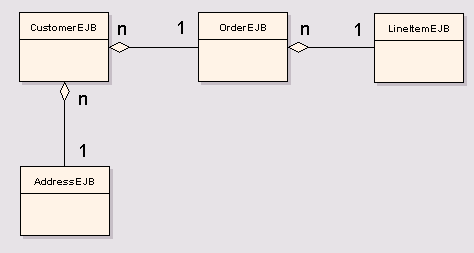|
Features Of CertGear's SCBCD (CX-310-090)
Certification Practice Test
-
Learn As You Go - Detailed explanations
tell you not just the right answer, but why
the right answer is right and the wrong answers
are wrong. References for further study are
also provided.
-
Customized Options - You decide the way
you want to take the testing including:
Timed, Live scoring, Randomization, Ask Incorrect,
Show Answer, Select # of questions.
-
Ask
Only The Questions You Got Wrong - This
is a great feature. At the end of the exam,
instead of being asked every question again,
you can tell the test engine to only ask you
questions that you got incorrect.
-
Randomization - The tests in our certification
mode are dynamic, not fixed like some other
practice tests are, so you'll get a new test
every time. Each test is timed and the objectives
are weighted the same as on the real exam.
-
History
- The test engine keeps a history of
all the exams and scores you have achieved
on those tests. You can easily track your
progress and help determine when you are ready
to take the actual exam.
-
Categories - Many tests contain categories
for you to selectively study topics. Additionally,
you can see your grade in each category at
the end of the exam.
-
Graphic
Scoring - Graphical Breakdown Of Exam
Results To Pinpoint Areas To Focus Your Study
Effort..
-
Updates - Keep Up-To-Date With The Most Current
And Most Accurate Exam Questions / Answers
/ Explanations With Complimentary Product
Updates.
Free SCBCD Certification
Practice Questions:
 Consider the following CMP entity beans and their
corresponding relationships:
Consider the following CMP entity beans and their
corresponding relationships:

Based on the diagram, the following relationships
exists across the entity beans:
1) CustomerEJB (1) <--> OrderEJB (n)
2) OrderEJB (1) <--> LineItemEJB (n)
3) CustomerEJB (1) <--> AddressEJB (n)
Which of the following EJB-QL statements can be
used to return all orders which include a 'HDTV'
as a line item?
A) SELECT OBJECT(o) FROM Order o, IN (o.lineItems)
li
WHERE li.item_type='HDTV'
B) SELECT OBJECT(o) FROM Order o
WHERE o.lineItems.item_type='HDTV'
C) SELECT OBJECT(o) FROM Order o
WHERE lineItems.item_type='HDTV'
D) SELECT o FROM Order o, IN (o.lineItems) li
WHERE li.item_type='HDTV'
E) SELECT o FROM Order o
WHERE o.lineItems.item_type='HDTV'
BACK
| NEXT
|
![]()